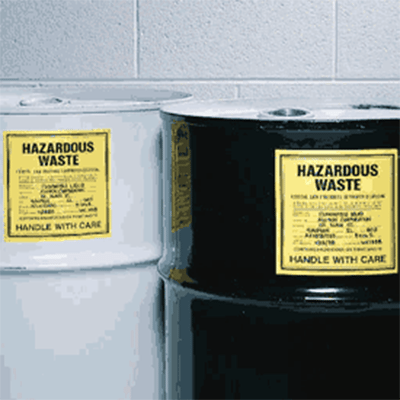
Throughout the coming weeks we will have several posts about container standards and management. Containers storing hazardous waste at permitted facilities are subject to the general facility standards as well as the specific container standards of 40 CFR 264/265.
When the EPA promulgated the unit-specific requirements (container standards), for hazardous waste containers, the Agency emphasized that although mismanagement of containers has caused some of the worst contamination, relatively few regulations would be needed to eliminate most of the problems. Today, I will be writing about some of the basics you need to know in order to maximize your container management efficiency.
To start, it is vital to note that all containers storing hazardous waste must comply with both state regulations and those regulations set forth by the federal government in 40 CFR.
That said, the word container is a bit non-specific. At Heritage, we teach that a container is any portable device in which a material is stored, transported, treated, disposed of, or otherwise handled. Now you may be thinking, “That definition is pretty non-specific too.” That is true. The definition is intentionally broad so that it can encompass all the different types of portable devices that may be used to handle hazardous waste, such as:
- Drums,
- Pails,
- Tankers, or
- Railcars, among possible others.
After looking into what items are available in which to store hazardous waste, we need to determine the definition of “storage.” Storing hazardous waste means holding it for a temporary period until it is treated, disposed of, or moved elsewhere. Again, this definition is intentionally broad in order to include any situation in which hazardous waste is held for any period of time.
It is important to remember that this information may not be all-inclusive and it is always best to check 40 CFR and your state regulations for the most up-to-date information. Keep checking the blog for future posts about container design and compatibility.
More News From Heritage
-
2/21/25
Heritage Announces East Liverpool, Ohio 2025 Environmental Grant Program
Learn about our East Liverpool Ohio grant opportunity!
-
2/18/25
Heritage Environmental Services Announces James (Shelby) Marlow as Chief Financial Officer
Heritage Environmental Services announced today that James (Shelby) Marlow will join the organization as Chief Financial Officer.
-
1/31/25
January Community Engagement Initiative: Home/Work Energy Reduction
Learn about our January community engagement initiative
-
1/29/25
Heritage Environmental Services Announces Chris Ebeling as Chief Commercial Officer
Heritage Environmental Services announced today that Chris Ebeling will join the organization as Chief Commercial Officer.
-
1/28/25
Heritage Environmental Services Addresses Industry Challenges with New State-of-the-Art Shredder
Heritage Environmental Services announced a new state-of-the-art shredding unit.
-
1/7/25
Navigating e-Manifest: What You Need to Know About Hazardous Waste Compliance
Learn about the e-Manifest Third Rule changes that begin January 22, 2025
-
12/23/24
Wreaths Across America 2024
This year, through collective effort and heartfelt generosity, we sponsored 727 wreaths and transported two truckloads of wreaths across the country.
-
12/2/24
Heritage Environmental Services Announces Rachel Evans as Chief Human Resources Officer
Heritage Environmental Services announced today that Rachel Evans will join the organization as Chief Human Resources Officer.








